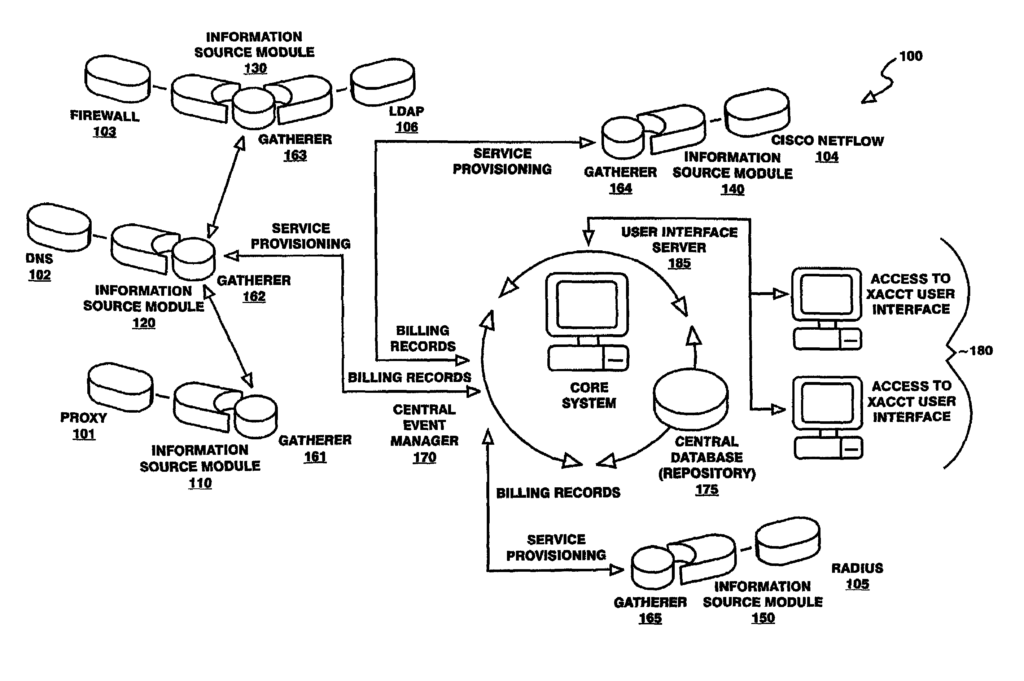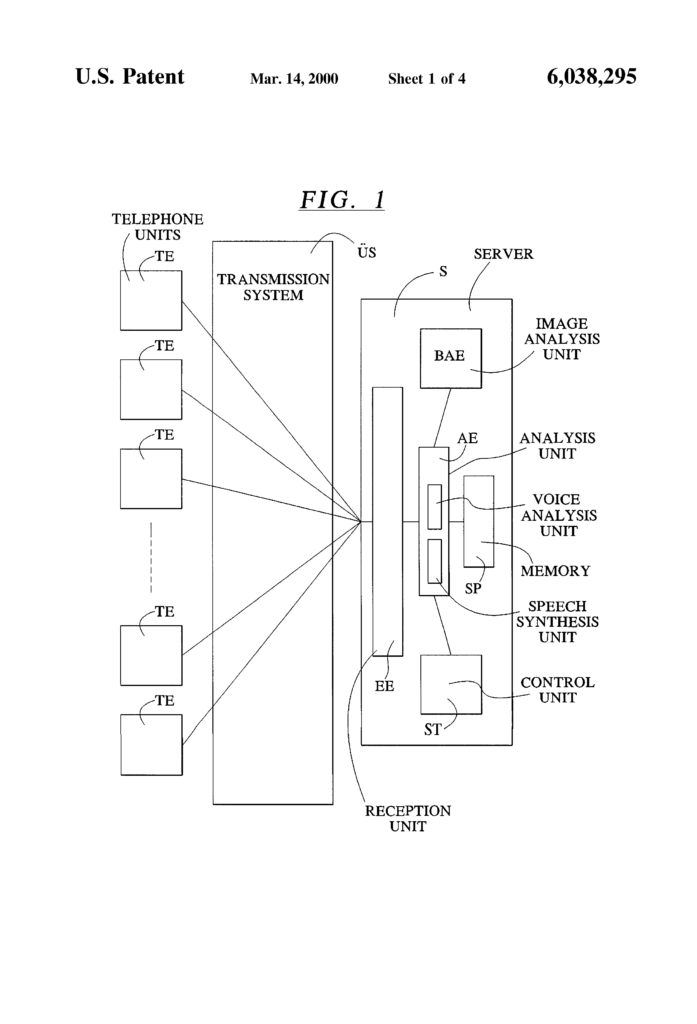 Amdoc sued Openet over four software patents directed to solving accounting and billing problems faced by network service providers. The district court held that the software patents were directed to patent-ineligible abstract ideas.
Amdoc sued Openet over four software patents directed to solving accounting and billing problems faced by network service providers. The district court held that the software patents were directed to patent-ineligible abstract ideas.
A split panel of the Federal Circuit reversed the district court.
The written descriptions of the software patents describe the same system, which allows network service providers to account for and bill for internet protocol (“IP”) network communications. The system includes network devices; information source modules (“ISMs”); gatherers; a central event manager (“CEM”); a central database; a user interface server; and terminals or clients. Network devices represent any devices that could be included on a network, including application servers, and also represent the source of information accessed by the ISMs. The ISMs act as an interface between the gatherers and the network devices and enable the gatherers to collect data from the network devices. The ISMs represent modular interfaces that send IP usage data in real time from network devices to gatherers. Gatherers can be hardware and software installed on the same network segment as a network device or on an application server itself to minimize the data traffic impact on a network; gatherers “gather the information from the ISMs.” Gatherers also normalize data from the various types of ISMs and serve as a distributed filtering and aggregation system. The CEM provides management and control of the ISMs and gatherers, and the CEM can perform several functions including performing data merges to remove redundant data. The central database is the optional central repository of the information collected by the system and is one example of a sink for the data generated by the system. The user interface server allows multiple clients or terminals to access the system, and its primary purpose is to provide remote and local platform independent control for the system.
Importantly, these components are arrayed in a distributed architecture that minimizes the impact on network and system resources. Through this distributed architecture, the system minimizes network impact by collecting and processing data close to its source.
The system includes distributed data gathering, filtering, and enhancements that enable load distribution. This allows data to reside close to the information sources, thereby reducing congestion in network bottlenecks, while still allowing data to be accessible from a central location. The software patents explain that this is an advantage over prior art systems that stored information in one location, which made it difficult to keep up with massive record flows from the network devices and which required huge databases.
The Federal Circuit noted that the two-step framework set out by the Supreme Court for distinguishing patents that claim so-called laws of nature, natural phenomena, and abstract ideas from those that claim patent-eligible applications of those concepts, is now familiar law. See Alice, (following Mayo Collaborative Servs. v. Prometheus Labs., Inc., 132 S. Ct. 1289 (2012)). This framework is sometimes collectively referred to as Alice/Mayo. First, the court is to determine whether “the claims at issue are directed to one of those patent-ineligible concepts.” If so, the court is to next consider elements of each claim both individually and “as an ordered combination” to determine whether the additional elements “‘transform the nature of the claim’ into a patent-eligible application.”
The Federal Circuit noted that its cases generally follow the step one/step two Supreme Court format, reserving step two for the more comprehensive analysis in search of the ‘inventive concept.’ Recent cases, however, suggest that there is considerable overlap between step one and step two, and in some situations this analysis could be accomplished without going beyond step one. See Enfish, LLC, v. Microsoft Corp.
The Federal Circuit began with an examination of eligible and ineligible claims of a similar nature from past cases. They considered the claims in In re TLI Communications LLC Patent Litigation.
Under step one, the court found that the claims were directed to the abstract idea of “classifying and storing digital images in an organized manner.” Also under step one, the court found that the claims were not directed to a specific improvement in computer functionality, but instead were directed to the “use of conventional or generic technology in a nascent, but well-known environment.
The Federal Circuit stated that claim 1 of one of the software patents could be described as focusing on correlating two network accounting records to enhance the first record. Claim 1 could also be described in several other ways—such as focusing on a computer program that includes computer code for receiving initial information, for correlating that initial information with additional information, and for using that additional information to enhance the initial information.
The Federal Circuit explained that even if they were to agree that claim 1 is directed to an ineligible abstract idea under step one, the claim is eligible under step two because it contains a sufficient inventive concept. The Court relied on the distributed architecture. Claim 1 of one of the software patents requires “computer code for using the accounting information with which the first network accounting record is correlated to enhance the first network accounting record.” In a previous decision, the Federal Circuit construed “enhance” as being dependent upon the software invention’s distributed architecture. The court held that this distributed architecture was a critical advancement over the prior art. In other words, they were looking primarily at novelty and found novelty in a hardware arrangement.
I have long believed that the main issue that should be considered is novelty, not 101 issues. While this was a sensible decision, unfortunately, the Federal Circuit is divided. Some judges are quite hostile to all software. The Federal Circuit is continuing to struggle with interpreting the vague Alice v CLS Supreme Court decision. Until they can come up with brighter line rules, there cannot be any business certainty.
 TLI Communications hold U.S. Patent No. 6,038,295 relating to a method and system for taking, transmitting, and organizing digital images.
TLI Communications hold U.S. Patent No. 6,038,295 relating to a method and system for taking, transmitting, and organizing digital images.